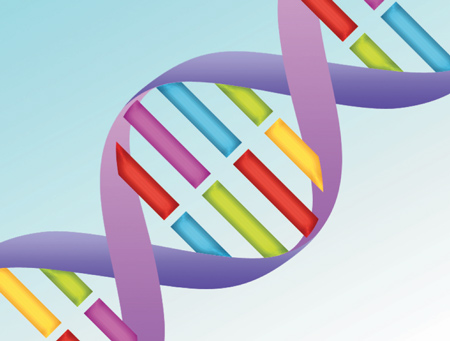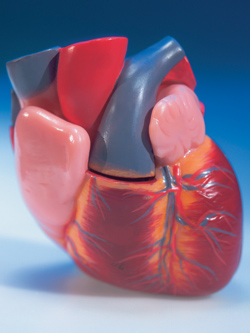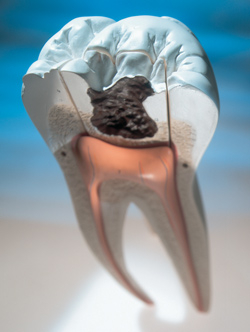CURRENT TOPICS
FLYING IS SAFEST SINCE THE DAWN OF JET PLANES
In 2012, the global airline industry marked its lowest rate of fatal accidents since the early 1960s. Note that there hasn't been a fatal crash in the United States since 2009 when a commuter plane crashed near Buffalo, N.Y.
The Aviation Safety Network says there have been an average of 34 crashes per year during the last 10 years. In 2012, there were just 22 fatal crashes worldwide. Of those 22, only 10 were passenger planes. In 2011, there were 28 crashes.
Airline safety increased with the start of incident reporting programs that encourage pilots and mechanics to pass on information about mistakes without fear of retribution. Other reasons for the improvements include more reliable equipment, improved pilot training, advances in air traffic control procedures and tighter regulatory oversight in developing countries, says The Wall Street Journal.
Russian built planes fly fewer passengers but suffer higher crash rates than planes built in the United States, Canada or European countries.

NEW DNA TESTING CHEAPER, MORE ACCURATE
Genealogy buffs now have more sophisticated and less expensive DNA testing available to them.
A decade ago, searchers paid as much as $1,000 to trace ancestors using their DNA. The tests can now be had for $100 to $300, and the results are more extensive. Ancestry.com sells a DNA test that identifies relations up to fifth cousins.
Most DNA tests have used the Y chromosome handed down almost unchanged from father to son. Women had to ask a male relative to take the test for them. Mitochondrial DNA is now being used in addition to or instead of the Ys. It's carried by both males and females, but is inherited only from the mother. It can track one's maternal line.
Both types of DNA can connect people whose common ancestors lived recently or hundreds of years ago. But to find out how closely you are related, and to locate relatives besides those on your direct maternal or paternal lines, you will need a different test.
The relatively new autosomal DNA test deciphers the amount of DNA shared between those whose common ancestors lived within the last half dozen or so generations, according to Megan Smolenyak, author of Hey America, Your Roots Are Showing. The more DNA two people share, the closer their connection.
FamilyTreeDNA of Houston has the largest database of Y DNA. FamilyTree also offers mitochondrial DNA which is called mtDNA, says The Wall Street Journal.
The Montainview, California company, 23andMe, has the largest autosomal DNA database and can additionally provide information about genetic predisposition to more than 200 health conditions.

MORE PEOPLE OF VARIOUS AGES CHOOSE TO LIVE SOLO
Researchers at the Council on Contemporary Living say living alone can be a symptom of affluence. In some ways it is. Certainly it costs more for the individual than sharing expenses.
About 32 million Americans now live by themselves and the number is growing. The largest jump is happening now among seniors. It's another sign that the influence of Baby Boomers, who turned 66 this year, is far from fading. The trend has been held back somewhat in recent years by boomerang kids who have moved back with their parents or grandparents.
Almost 28 percent of the nation's 115 million households consist of one person compared with 26 percent in 2000, according to Census data. In 2011, 9.7 percent of all households consisted of one person age 65 or older.
The effect of age is being redefined as people live longer and healthier lives. A lot of men who live by themselves today are divorced and just learning how to go solo.
The marketplace is delighted with the new buying power, tastes and habits of people living alone. They have more money to spend on themselves and their homes, be they apartments, condos or free standing structures.
NEW DEVICES IMPROVE POSTURE
Devices that attach to the back or legs promise to help people keep their posture by emitting a vibration. Golfers like them, and office workers are avoiding back strain by using them.
The LUMOback ($149) is worn against the lower back and vibrates when the back isn't kept straight. At Forrester Research they say the "Big Mother" devices will soon be part of employer wellness programs.
STAY STRONG AND LIMBER AS YOU AGE: TAKE VITAMIN D
As you navigate from mid-life into your 70s, there's one easy thing you can do to keep your lower body strong and your joints limber. A study by Wake Forest School of Medicine in Winston-Salem, N.C., shows that 70 to 79-year-olds with the highest levels of D were the least likely to have trouble walking and stair climbing.
Study author Denise Houston explains that vitamin D repairs muscle making walking and climbing easier. She recently reported about the findings in Prevention. Vitamin D comes in a tiny little pill, but it can have great big benefits
PAY AS YOU DRIVE AUTO INSURANCE IS COMING
Some insurance companies already offer pay as you drive but all insurers are increasing efforts to tap into an automobile's various systems in order to monitor the policy holder's driving.
If you often exceed the speed limit, go fast around turns, or take long road trips, you won't like the cost of pay as you drive insurance. User based programs offered now include Progressive's "Snapshot" and State Farm Mutual Automobile Insurance Co.'s "Drive Safe and Save" program which draws consumers with promises of 30 percent to 50 percent reductions. To get the largest discounts you would have to install State Farm's "In-Drive" communicator device and drive only 500 miles a year.
The device monitors distance traveled, time of day (late night trips trigger higher rates), hard acceleration, sudden stops, abrupt turns and speed faster than 80 miles per hour.
The average driver who travels about 11,000 miles a year can expect a discount of 10 percent to 12 percent, according to State Farm. Allstate Insurance Co.'s "Drive Wise" program offers a 10 percent discount just for signing up.
At Progressive, managers say not many young drivers get a break from using behavior monitoring systems, especially those that penalize for sudden stops and abrupt turns, because that's what young drivers often do.
State insurance regulators say there will be a backlash if insurance rates suddenly jump. They will want hard data on any rating scheme that charges more because somebody drives more miles.
DO YOU NEED LONG TERM DISABILITY INSURANCE?
A long illness could derail even the best retirement plan
You may be a diligent saver, one who maxes out your 401(k) and IRA, but you probably haven't considered protecting your ability to earn money.
Your earning power is more valuable than your savings or your stock portfolio. Not planning to protect it, even for a couple of years, would seriously alter your plans for the future.
One in three employees age 25 to 65 will be out of work for three months or more because of an injury or illness, according to the Society of Actuaries. Accidents are not the main cause. About 90 percent of disability claims are for common illnesses and health conditions such as back problems and cancer, according to a report by the Consumer Federation of America.
Advisors quoted in Fortune recommend looking at your cash flow and your employment income and thinking about how well you would do if you couldn't work. Short term disability insurance (sick leave) covers earnings for only a few months. Long term disability replaces income until you reach age 65.
About one-third of American workers have access to long term disability insurance through their employers. The coverage typically provides up to 60 percent of base salary and most have a benefit maximum. For a high income earner it wouldn't be enough. A personal policy replaces 70 percent of income and payouts are tax free.
When considering a policy look for "own occupation" coverage. It covers you if you can't perform your current job, as opposed to policies that don't pay if you're able to work in any job at all.
WAIST-TO-HEIGHT RATIO: NEW SCREENING TOOL
The size of your waist can tell doctors a lot, says a researcher, even whether you are at risk for heart disease. A British Nutrition Foundation scientist recently presented the finding at the 19th Congress on Obesity in Lyon, France.
Study leader Dr. Margaret Ashwell, former science director of the foundation, says an acceptable height-to-waist ratio can help increase life expectancy for every person in the world. Her findings show that waist size should be less than half of height. A woman who is 64 inches tall should have a waist circumference of 32 inches or less.
| The finding was derived from an analysis of 300,000 people. It showed that weight to height ratio was better able to predict high blood pressure, diabetes, heart attacks and strokes than body mass index (BMI). Cardiometabolic risk factors include LDL cholesterol, high C-reactive protein, smoking, physical inactivity, unhealthy eating, stress, depression and high blood sugar, in addition to race, age and family history. |
 |
BREAKFAST GETS YOUR METABOLISM GOING
There is a lot you can do to increase the number of calories you burn during the day. Leaving for work on an empty stomach puts your metabolism on hold by sending it the message to save energy in case another meal doesn't arrive. Breakfast signals the metabolism to burn calories and produce energy which is what you need in the A.M.
 |
DENTISTS OFFER NINE WAYS TO IMPROVE YOUR SMILE
If you're considering a dental makeover, Johns Hopkins Medicine gives this rundown of products and options. Costs will vary depending on the amount of work to be done and your location.
|
- Tooth Whitening. Professional bleaching costs about $600 and takes from 45 minutes to two hours. Laser whitening costs about $1,000.
- Veneers. The custom made plastic or porcelain moldings cover teeth and last up to 15 years. They cost $700 to $2,500 per tooth. Synthetic veneers cost about $250 but last only five to seven years.
- Bonding. The least expensive way to fill cracks or chips. The material is matched to the shade of teeth then applied, smoothed and hardened. It costs $300 to $600 per tooth.
- Crowns. Made of porcelain, they are attached after a root canal to protect what's left of the original tooth. The cost is $600 to $3,100 each depending on the amount of work to be done.
- Dental implants. One of the most expensive option. A surgeon implants a metal post into the jaw where the tooth will be placed and cements a crown to the post. A basic implant costs $1,250 to $3,000, but additional work may be required which can escalate costs to $15,000 or more.
- Gum surgery. To remove tissue scarred by periodontal disease the surgeon reshapes the gums using tissue taken from the palate.
- Braces. Invisible ceramic braces cost $3,000 to $7,000. If you have veneers you'll need old fashioned braces because ceramic won't attach to them.
- Permanent bridges. They include one or more false teeth implanted between two porcelain crowns. It costs $500 to $900 per tooth.
- Dentures. Removable dentures are typically made of acrylic resin, metal or porcelain. They can be partial or complete depending on how many teeth you're missing. The removables cost $500 and up. A full set costs $2,500 or more.
PHARMACISTS PLAY AN INCREASING ROLE IN HEALTH & NUDGE PEOPLE TO TAKE THEIR PILLS
One problem with prescriptions: many bottles just tell the name of the medication and how many pills to take. Busy primary care doctors may not have explained how to take them, or in the stress of the visit, the patient might have forgotten the instructions. Here are two examples:
- A woman, who was prescribed a once a week bone building pill, took it whenever it was convenient. Her pharmacist explained that it should be taken in the morning and she shouldn't eat anything or lie down for an hour afterward.
- A man taking a medication for reflux disease thought he would need surgery because his medication wasn't doing enough. After a pharmacist explained when and how to take it, the man felt much better.
Walgreens is gradually remodeling their stores to put pharmacists at open desks so customers can easily discuss their prescriptions with them. The company says many patients are talking to their pharmacists more often than to their primary care physicians.
Recent studies show only 25 percent to 30 percent of medications for heart disease and diabetes are taken properly. Many aren't refilled as prescribed. Pharmacy groups are now seeing how the enhanced role of the pharmacist is making it easier for patients to reorder their medications and to take them correctly. This reduces hospitalizations and emergency room visits that occur when patients skip their meds.
CVS Caremark introduced the Pharmacy Advisor program last year to help diabetes and heart disease patients. About 16 million patients are involved. After one year, there was a 17.2 percent decline in members not taking their medications as prescribed. The program will expand next year to include patients with cancer, depression, chronic obstructive pulmonary disease and asthma.
While CVS and Walgreens benefit when more prescriptions are filled, both say their main goal is to improve medication adherence and to help reduce health costs in general.
THE BEST SLEEPING BAG
The Feathered Friends Hummingbird sleeping bag may cost $380, but experts at SmartMoney say it's worth it, whether you're on a fall campout or a winter hunt. The hooded, mummy style sleeping bag is a slim 29 inches wide. It's designed to seal in body heat and fend off nature's chill. It has a water resistant exterior and weighs just under 2 pounds. When folded up, it's the size of a book.
© 2013 TLC Magazine Online, Inc. |



